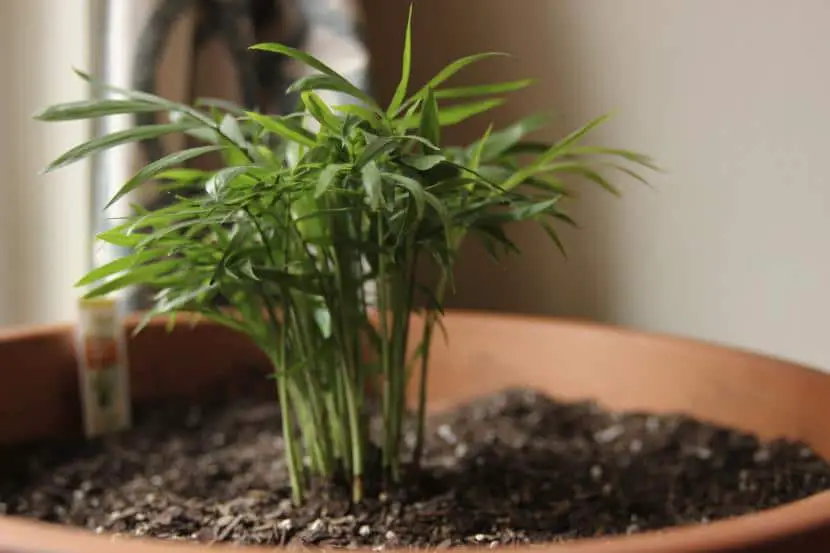
It is one of the most used palm trees to decorate interiors, but it also looks splendid under a porch, or in any corner of your garden. We are referring, of course, to the Living room palm treewhose popularity goes in growing as more of us decide to include it in the home design.
But what care does it require? Can you resist the cold? You’ll get these answers, and others, below.

The parlor palm, whose scientific name is Chamaedorea elegansis a unicaule palm (that is, with a single trunk) native to Latin America, mostly from Mexico. It grows to a height of two meters, with a very thin stem, less than 5cm thick. It blooms at the beginning of summer, but its small flowers, since they do not have petals, lack attractiveness, and there are those who choose to remove them; on the other hand, if you want to sow its seeds, you should know that you need two copiesto pass the brush from one flower to another.
This is a slow growing species, but it will give us a lot of satisfaction, since withstands temperatures down to -3ºC. As many seedlings are sold together in the same pot, the ideal is plant them in a larger pot as soon as we acquire it, since otherwise we would begin to lose some. For this same reason, it is also important pay periodically using a specific fertilizer for palm trees, throughout the growing season (from spring to late summer).

They are plants very resistant and adaptablewhich will grow well in any type of substrate. However, I recommend that you make the following mixture so that they have an optimal development: 60% black peat + 30% perlite or river sand + 10% earthworm humus. Thus, you will not have to worry because they will not lack anything. Of course, do not forget about irrigation. East it will have to be frequentbut avoiding that the substrate remains flooded.
Being sensitive to spider mites, if you live in a dry environment, spray it from time to time with rainwater or osmosis water, or place glasses filled with water around it. To eliminate the pest or repel it, you can use Neem Oil, or chemical insecticides that contain Chlorpyrifos or Imidachlorid.
Lounge palms are pretty, right?
